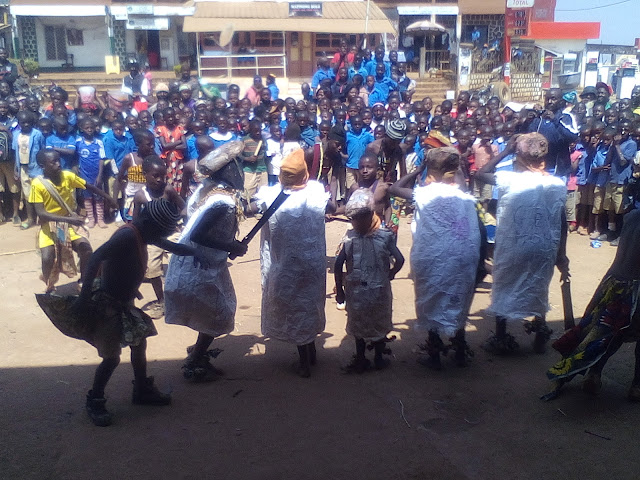World Bank:
Country Overview
Cameroon is a lower-middle-income country
with a population of 23.3 million people. Situated in Central Africa, it shares
a border with Chad, the Central African Republic, Equatorial Guinea, Gabon, and
Nigeria. Two regions are Anglophone (the northwest and southwest regions that
border Nigeria), while the rest of the country is Francophone. Cameroon is
endowed with significant natural resources, including oil and gas, high-value
timber species, minerals, and agricultural products such as coffee, cotton,
cocoa, maize, and cassava.
Political Context
Cameroon’s ruling party, the Cameroon
People’s Democratic Movement (CPDM), has long dominated the country’s political
landscape and currently occupies 148 of the 180 seats in the National Assembly and
81 of the 100 seats in the Senate, which was created in 2013.
Presidential elections are scheduled for 2018. While Cameroon has enjoyed
peace for many decades in spite of its highly diverse population, it now faces
an increasingly challenging situation in its northern regions, where Boko Haram
is waging alow intensity war.
Although Boko Haram has lost ground at the strategic level, attacks have not
stopped in the Far North. An estimated 7,500 Cameroonians have been displaced
internally and Cameroon is also host to an estimated 45,000 Nigerian refugees
in the North and 131,000 refugees from the Central African Republic in the
East. The year 2017 has been marked by high tensions in the northwest and
southwest Anglophone regions, which feel marginalized by the rest of the
country.
Social Context
As population growth outpaces poverty
reduction, the number of poor increased between 2007 and 2014 by 12 percent to
8.1 million people. Poverty is increasingly concentrated in Cameroon’s northern
regions with an estimated 56 percent of the poor living in the North and Far
North regions alone. This poverty trend was observed even before conflict began destabilizing the region.
Economic Overview
Despite having one of the most diversified
economies in the CEMAC region, Cameroon’s economic activity slowed in 2016.
Growth is expected to dip to 3.7 percent by the end of 2017, compared to 4.4
percent in 2016. This outcome is due to slower growth in oil production (+3
percent in 2016 against 37 percent in 2015) resulting from the maturity of the
main oil fields, and to the avian flu epidemic that has damaged the local
poultry industry, particularly in the West, which accounts for 80 percent of
production. However, continued implementation of the Government’s ambitious infrastructure
plan and interventions to boost the agriculture and forestry sectors have
significantly contributed to sustained strong growth in public works and
construction and services.
Inflation rose to 1.6 percent at the end
of June 2016, largely based on the increased tax rate on alcohol (7.4 percent)
and tobacco in the 2015 budget law, and the 4.9 percent increase in prices for
services, restaurants, and hotels.
Development Challenges
Cameroon suffers from weak governance,
hindering its development and ability to attract investments. Cameroon ranks
130th out of 168 countries in the 2015 Transparency
International corruption perceptions index and ranks 172nd out of 189 economies in the 2016 Doing Business Report.
Last Updated: Dec 05, 2017
Source: Worldbank website






Comments